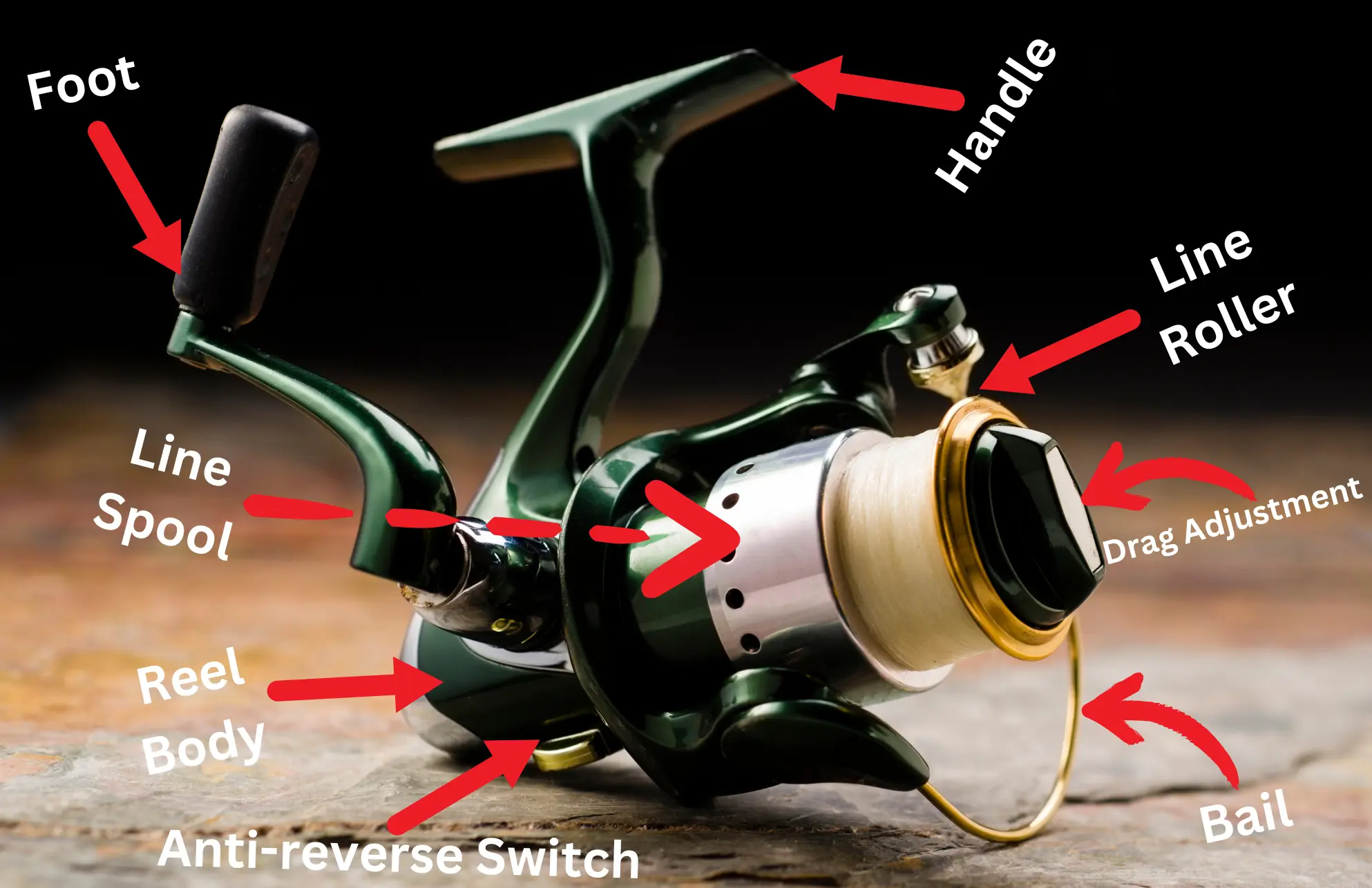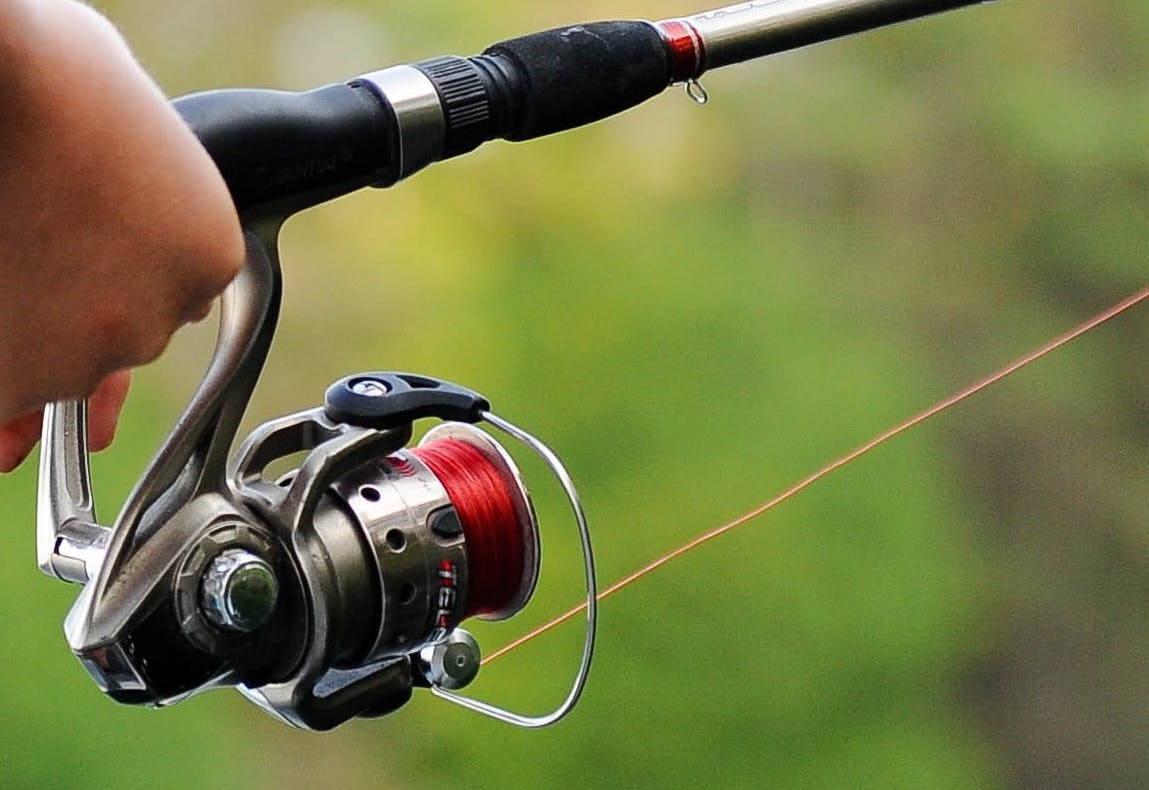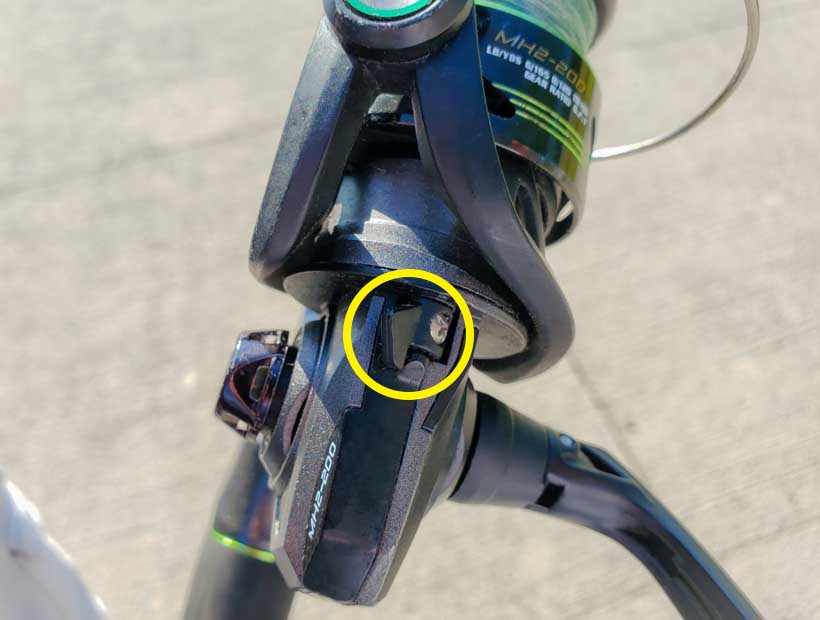Are you a beginner angler looking to understand the different parts of a fishing reel?
Every avid fisherman knows that the key to a successful catch isn’t just about the bait or the technique, but also about the equipment you use. At the heart of every angler’s toolkit is the fishing reel.
However, have you ever taken a moment to truly understand the parts of a fishing reel? Delving into the intricate fishing reel components can reveal a world of design and engineering specifically aimed at enhancing your fishing experience.
Whether you’re curious about the parts of a spinning reel or seeking a comprehensive look at the entire fishing reel anatomy, this guide is for you. Dive in as we unravel the mechanisms and components that make up this essential fishing tool.
What is the anatomy of a spinning reel?

A fishing reel mainly consists of a spool, handle, drag system, and line guides. The spool stores the fishing line and can be rotated by the handle in order to cast or retrieve the line. Drag systems allow for adjustable tension when fighting a fish and are typically regulated by a series of switches or dials on the outside of the reel housing.
Finally, small metal loops often encircle or protrude from both sides of a spinning fishing reel in order to guide and direct the angler’s winding motions as well as provide smoother retrieval of their catch.
Parts Of A Fishing Reel:
- Reel Body
- Reel Handle
- Foot
- Line Spool
- Line Roller
- Drag Adjustment
- Bail arm
- Anti-Reverse Switch
Here are details about different Parts of a Fishing Reel:
Reel Body

The reel body is the most important part of the fishing reel. It houses all of the internal components and provides a sturdy framework for your fishing line to be spooled on. The body of a fishing reel can be made from different materials such as graphite, aluminum, or even a combination of both to provide strength and durability.
There are two main types of fishing reels available on the market today – spinning and baitcasting.
- Spinning reels have an open-faced design with the spool mounted parallel to the rod. It is typically easier to use for beginners since they do not require as much skill as baitcasting reels when casting.
- Baitcasting reels, on the other hand, have a closed-face design where the spool is perpendicular to the rod.
They are also more versatile in terms of their ability to handle different types of lures and lines. However, baitcasting reels offer more precision and control over casting distance and accuracy once mastered.
The body material used determines how strong but lightweight it will be; Graphite material is known for being lightweight while aluminum offers more strength but adds weight but with advancements in technology some brands offer hybrid models that combine these two materials which give superior strength without adding too much weight.
A well-crafted reel makes all the difference between catching fish or not; choosing one with solid construction will result in better performance while ensuring longevity keeping maintenance low if properly cared for over time.
Reel Handle

The reel handle is the part of the fishing reel that is used to retrieve or wind in the fishing line. It is usually located on one side of the reel and can be turned clockwise or counterclockwise.
The handle can come in different shapes and sizes, but all serve the same basic function. The correct length of your reel handle should depend on your personal preference and fishing style.
Single handles are most commonly found on spinning reels, while double handles are more common on baitcasting reels. Single handles allow for quicker retrieval, which can be useful when trying to catch fast-moving fish.
On the other hand, double handles provide more leverage which makes it easier to retrieve heavier fish. The type of handle you choose should depend on your personal preference and the kind of fishing you plan to do.
If you plan to fly fish for trout in a river, a single-handle spinning reel might be ideal. However, if you’re going after bigger fish like salmon or tuna, a baitcasting reel with a double handle would be more appropriate.
A poorly designed handle can cause discomfort and even lead to injuries like blisters or calluses from repetitive use. A good quality handle should have an ergonomic design that fits comfortably into your hand without causing fatigue or discomfort during extended use.
Additionally, it should be made from durable materials that can withstand exposure to saltwater or freshwater environments without corroding or breaking down over time. Choosing the right type of reel handle for your needs is essential for an enjoyable and successful day out on the water.
Foot
The reel foot is essentially a metal piece fixed to one part of the reel that helps hold it securely in place onto your rod blank when you fasten them together. The foot is located on the bottom side of a spinning or baitcasting fishing reel and it serves an integral purpose in connecting the fishing line spool to its handle.
It houses two holes into which screws can be inserted: one that attaches directly onto the body/frame of your tackle box/rod setup, and another at right angles with an identical screw thread used for snuggly holding together your chosen handle. The foot also helps guide the line onto your spool as you crank away on your handle during long days spent casting out those lines while helping keep steady friction so nothing slips!
Line Spool

Fishing line is an essential component of any fishing setup, and a well-designed line spool is critical for ensuring that the line remains in the best possible condition. The spool’s primary function is to keep the fishing line neatly wound and easily accessible when needed. Fishing lines come in a wide range of thicknesses, lengths, and materials, such as monofilament, fluorocarbon, and braided lines.
The two main types of line spools are fixed and interchangeable spools. Fixed spools are attached to the reel permanently and cannot be removed or replaced.
On the other hand, interchangeable spools can be easily removed from the reel body and replaced with another one when needed. Interchangeable spools provide greater flexibility to anglers as they can switch between lines with different weights and materials without having to change their entire reel setup.
There are also different shapes of spools available in the market, such as cylindrical or tapered. While cylindrical-shaped spools are standard on most spinning reels because they offer greater capacity for holding more line on a single spool; tapered shaped ones reduce friction during casting making it ideal for longer casts.
A poorly designed reel body or low-quality line guide can cause tangles that lead to frustration for any angler; however, a well-designed reel with an appropriate size of fixed or interchangeable set-up allows better control over your cast because it will hold more appropriate amount of weight which in turn will help you cast farther distances without tangling your lines.
Line Roller
The line roller is a small but essential component of a fishing reel. It is located on the bail arm and is responsible for guiding the fishing line onto and off the spool during both casting and retrieving. The primary function of the line roller is to reduce line twists, which can lead to tangles and knots that can hamper your fishing experience.
The line roller typically consists of a small metal or ceramic cylinder that rotates as the line moves across it. This rotation helps to ensure that the line spools onto and off of the spool smoothly, reducing friction and twisting.
One of the most important functions of a good quality line roller is its ability to reduce twisting in your fishing line. When you cast your bait into the water using a spinning reel, your fishing line will typically twist as it comes off the spool. This twisting action can cause snarls or knots in your line that can make it difficult to reel in fish or even cause lost fish.
Drag Adjustment

The drag system of a fishing reel is one of the most important parts, as it controls the amount of resistance that a fish feels when it pulls on the line. The drag adjustment system allows anglers to adjust the tension on the line, which can help prevent breaking or losing their catch.
The drag adjustment system works by applying pressure to the spool, which controls how much line is released during a fish’s run. A properly adjusted drag will allow an angler to tire out a fish without breaking their line or losing their catch.
There are two main types of drag systems that are used in fishing reels: front drag and rear drag.
Front drag systems are located at the front of the reel and offer more power and control than rear drag systems, but they can be harder to adjust while reeling in your catch. Rear drags are located at the back of the reel and are easier to adjust while fishing, but they may not have as much power as front drags.
Another type of drag system is called “sealed” or “waterproof” drags. These types of drags are designed to keep water out of the reel’s internal components, which can help prevent damage from saltwater corrosion or debris.
Read more: Do Fly Fishing Reels Have A Drag? [The Ultimate Guide]
Bail arm
The bail is one of the most important parts of a fishing reel. It is a metal wire that can be flipped open or closed to allow or prevent the fishing line from coming off of the spool. When the bail is open, it allows you to cast your line out.
When it is closed, it keeps the line on the spool and prevents tangles when reeling in. The mechanical function of the bail varies depending on its type.
There are several types of bail systems used in fishing reels today. The three most common types are standard wire bail, roller bail, and magnetic bail.
- Standard Wire Bail – A wire arm that lifts up and down, guiding the fishing line onto the spool during retrieval and back off during casting.
- Roller Bail – A bail that uses a roller to reduce friction as the line is spooled in and out. This type of bail is typically found on higher-end spinning reels.
- Magnetic Bail – A bail that uses a magnetic system to slow down the rotation of the spool, preventing the line from overrunning and tangling. This type of bail is also commonly found on higher-end spinning reels.
Anti-Reverse Switch

The anti-reverse switch is a small but vital part of a fishing reel. It serves the function of preventing the handle from spinning backward when you are reeling in your catch. This switch ensures that any fish you’ve caught will not slip away during retrieval, as it helps maintain tension on the line.
Manual Anti-Reverse Switch
A manual anti-reverse switch is a basic system that requires you to manually flip a lever or button to turn it on or off. With this type of switch, anglers have complete control over whether or not they want to engage the anti-reverse feature. Manual switches are commonly found on spinning reels and some baitcasting reels.
One drawback of manual switches is that they can accidentally be left in the off position, leading to issues with line management and potential loss of fish. Additionally, manual switches may wear down more quickly than automatic systems due to constant use.
Automatic Anti-Reverse Switch
An automatic anti-reverse system engages automatically as soon as you start reeling in your catch. This type of system does not require user intervention and operates seamlessly with minimal effort required by the angler.
Automatic systems are commonly found in modern spinning reels and come equipped with a one-way clutch bearing that engages the anti-reverse feature instantly as soon as you start turning the handle. These systems are generally more reliable than manual switches and require less maintenance over time.
If you prefer to maintain maximum control over your line at all times, a manual switch may be the best choice. On the other hand, if you are looking for an easy-to-use system with minimal maintenance requirements, an automatic anti-reverse switch may be more suitable.
Read also:
- Parts Of A Fishing Rod
- How To Transport Fishing Rods In Car
- How To Store Fishing Rods In Garage?
- Is Fishing Good After A Hurricane?
Conclusion
Familiarity with the different parts of a fishing reel, such as the reel body, handle, foot, line spool, line roller, drag adjustment, bail, and anti-reverse switch, can significantly improve your overall fishing experience and success.
After delving deep into the intricacies of the parts of a fishing reel, it’s evident how intricate and vital each component is for the reel’s overall performance. Every fisherman, whether novice or seasoned, can greatly benefit from understanding the fishing reel components.
Notably, the parts of a spinning reel, which remains popular among many anglers, play crucial roles in ensuring smooth casting and reeling.
As we conclude our journey through the fishing reel anatomy, remember that a thorough knowledge of these parts will not only enhance your fishing experience but also help in maintaining the longevity and performance of your reel.
